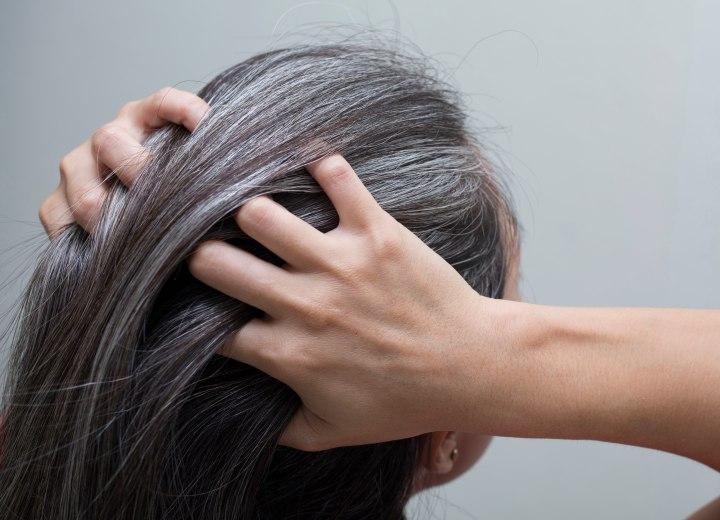Hairstyle to Cover Bald Spots

Do you have any suggestions for a style that would work for me? I'm 57 years old with mostly gray hair, a round face, and thin hair that's currently just a little longer than shoulder length. I'm really ready for a change but worried that stylists aren't prepared to handle this type of challenge. Any advice would be greatly appreciated.
What you're describing as "bald spots" are actually variations in hair growth patterns that many people have, and skilled stylists learn to work with these patterns as part of their training. The temple area recession you're experiencing is quite common, especially as we age, and there are styling techniques that can minimize its appearance while creating a flattering overall look.
When you do decide to visit a stylist, communication will be your best friend. Rather than using general terms like "I want a medium-length cut," be as specific as possible about your concerns and goals. You might say something like, "I have temple hair recession that I'd like to minimize, and I need enough length on top to create coverage for these areas." Don't hesitate to point out exactly where your hair grows differently and what you're hoping to achieve.
Based on your description of thin, gray hair with a round face, there are several approaches that could work beautifully for you. Contrary to what many people think, keeping hair very long to cover problem areas often backfires because the weight of longer hair can actually make thinning more noticeable and pull the hair flat against the scalp, emphasizing rather than hiding sparse areas.
Instead, consider a layered cut that works with your natural hair growth patterns. A modern shag-style cut could be perfect for your situation. This type of cut incorporates shorter layers around the face and crown area while maintaining some length in the back. The layers create movement and volume, which helps camouflage uneven growth patterns, while the shorter pieces around your face can be styled forward to soften your hairline and minimize the appearance of temple hair recession.
For someone with your hair type and concerns, a cut that falls somewhere between chin and shoulder length often works best. This length provides enough hair to work with for styling while not being so long that it weighs down your fine hair. The key is having layers that start around the cheekbone area and work their way up, creating fullness where you need it most.
Color can also be your ally here. Since you mentioned your hair is mostly gray, you might consider having highlights or lowlights added to create depth and dimension. This technique can make hair appear thicker and fuller while also helping to blend any areas where the scalp shows through.
To add even more volume and body to your style, you might discuss the possibility of a body wave or large-curl perm with your stylist. Modern perming techniques have come a long way from the tight, artificial-looking curls of decades past. A well-executed body wave can add lift at the roots and create natural-looking texture throughout your hair, making it appear significantly.
©Hairfinder.com
See also:
Hair loss & thinning hair
Female hair loss & pattern baldness